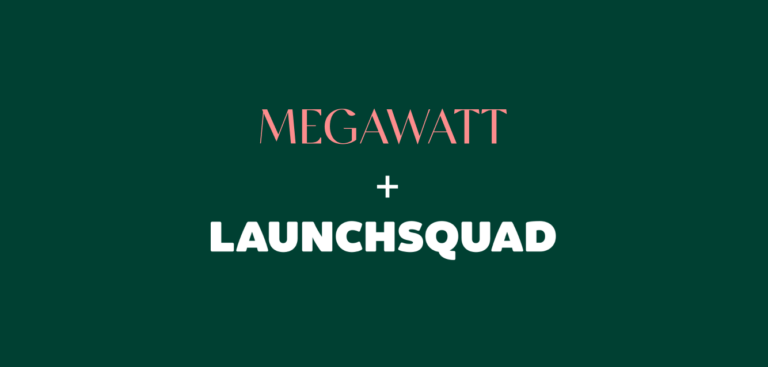I recently got the chance to sit down with Brian Gladstein, SVP of Marketing at A-LIGN, a compliance, cybersecurity, cyber risk, and privacy solutions provider, to talk about his success as a tech marketing leader and how his career has evolved.
I always find it so interesting to learn about the winding roads that people take to find a fulfilling and meaningful career, and Brian provided plenty of insight as to: how he became an SVP of Marketing, the hiring mistakes he made (and learned from!) and how he builds successful marketing teams (and the challenges he faces).
Read on to learn more about his take on leadership, personal and professional development, and the world of cybersecurity.
A Bit About Brian Gladstein
Brian Gladstein is a Cybersecurity Market Strategist and SVP of Marketing at A-LIGN. He received a BS in Computer Science at MIT and an MBA from Stanford.
He’s an accomplished business builder with 20+ years in cybersecurity and B2B software. As a growth-stage marketing leader, he brings a rich technology background with years of experience driving growth through marketing and sales/partner/customer engagement. He is a skilled product and marketing strategist and a talented leader and coach.
“The world is changing fast. Helping companies adapt is what I do best.”
Via Megawatt, Brian and I have had the good fortune of working together twice now, most recently through Brian’s position as SVP of Marketing at A-LIGN. I’ve always admired his approach to leadership and the unique warmth and sincerity he brings to what can be, at times, a less-than-welcoming industry.
Note: Although this post is not in an interview format, I’ve preserved Brian’s words and point of view throughout, so “I” refers to Brian, not me (Meg, the writer).
Brian’s Path into Tech Marketing
I went to college for computer science. This was in the late ‘90s, when the web was just taking off. I worked at a company that made a product similar to WebEx or Zoom.
At that point, I was a software engineer — but I was the rare type of engineer who liked going out and talking to customers. I would follow our product marketer around to customers to understand what they were doing and their use cases. I got increasingly interested in the business side, so I went to business school. After that, I moved into product management and got back into security.
So I was working in security in 2004 at RSA [a leading international cybersecurity organization], and that’s when I found my way into product marketing. I loved it because I got to be close to the technology, I got to tell technology stories, and I was working on deals with sales reps and customers — on things that mattered to the health of the business.
I liked the real-time, fast pace of product marketing. If I did something, I knew it would have an impact. And that’s how I found my niche — still very close to the product but in a more external-facing capacity.
But security back then was – I don’t want to say it was a joke, it wasn’t — but it wasn’t nearly as sophisticated as it is today. You were dealing with people who weren’t interested in taking risks. And compliance was this little side thing when you’re working on security products. It didn’t seem to matter. Customers didn’t want to make changes. So I started doing some consulting. As it happened, given my background, I won a lot of security clients.
That was when there were scary stories about hacking at Google and the DoD, and the whole security culture came together. And so, a few years later, I went back to Carbon Black (now VMware), and I’ve been in security ever since. I love the security industry because it gives meaning to what I do every day. I’m helping protect companies and people from having their information stolen or compromised.
But when I got introduced to A-LIGN, I realized that compliance matters because it often sits in the way of deals. You have customers who want to do business with you, but they won’t if you can’t prove you’re secure.
Today I run marketing at A-LIGN. We offer cybersecurity compliance and audit services and a tech platform for organizations of any size and industry. We’re a $100 million company with 400 people and growing fast.
Related Content: B2B Marketers, It’s Time to Swap Qualified Leads for Quality Stories
How to Approach Hiring and Building Teams
I’ve made a lot of bad hires over the years. I’ve hired people because it seemed like they did good work and they were available. But that wasn’t enough.
One time in an interview, I was just so flustered I said to the candidate: “This job is going to be hard and I don’t know if we’re going to be successful, but I think we have a shot, and if you’re up for trying it with me, I’m going to do everything I can to make you successful.” And that person was one of the best employees I ever hired.
I started shifting my whole approach to, “this job is going to be hard, but hard things are worth it.” I want to find people who are up for that challenge. Then my role is to show them the growth path.
And the employee is thinking: “Hey, I’m hungry, I have a structure that’s going to support my growth, and my boss’s job is to make sure that at the end of that journey my resume looks stellar.” I think that motivates people, and that’s the kind of people I want to hire.
Related Content: Four Reasons to Work at Megawatt
How to Build Successful Marketing Teams
When we started in 2021, the marketing team was seven or eight people, and today we’re pushing 20 with a bunch of open roles. We’ve expanded from just marketing to also including an inside sales team.
I always think of team building as a puzzle. Every person you add brings something unique, and you have to absorb that uniqueness and then figure out the puzzle piece you want to fit next.
So if you’re looking at a small organization or a lot of spots to fill, you may just be looking for functions. But once you hire a leader or even an individual contributor, you often realize that the way you thought you were going to build it needs to change a little bit.
When I think about teams, I consider the functional jobs necessary: I need product marketing, BDRs [business development representatives], and SDRs [sales development representatives]. Then I think about balance. I need some excellent operators; I need people who think big and push the envelope. I want some extroverted people and some introverts.
And you want some people who, no matter what their function is, can operate as a leader and an educator to the rest of the team, and then you want some people who are just hungry, ready to learn.
The Challenges of Hiring Great Talent
Let me talk about my experience growing a team quickly over the last year or two amidst the great resignation and the hiring shortage.
Hiring is more complex than ever. And it’s complicated by the fact that historically Tampa, Florida (where we’re based), was a less expensive place to live. And so, when suddenly our talent is being poached by Silicon Valley cybersecurity companies, that is a tough spot. But we’ve managed to keep most of our people and have attracted more amazing people.
When I think about what attracts a marketer, the type of marketer that I want on my team is somebody ambitious and wants to really make an impact where they are and get promoted, move up and get more responsibility.
And so the way I think about hiring is: Listen, if you’re going to work for me, let’s look at the next two to three years, ideally three years. I want you to commit that time to me. And then I’m going to commit to you that the resume you end up with after that time is stellar.
I put a lot of thought into both the people who work directly for me and those who report to them. I ask myself: Is everybody challenged? What are the bullets that they’re putting on their resume? What are the accomplishments that will give them that next great job?
I hope they stay with me as long as possible, but with marketers, after a couple of years, you hit this massive rocket ship in your career where suddenly everything clicks. And so, between three and eight years out, it is a huge growth curve for marketers, and then you start to level out, some will continue to become executives, and some will be leaders within marketing.
So I focus on: What does your resume look like, and how can I make sure your resume looks impressive? That requires a candid conversation: what are your goals, where do you want to grow, and what do you want that resume to look like in a few years?
Favorite Tool: The Job Leveling Matrix
This has been a growth area for me. And even before I started here, the largest team I ever had was six or seven people, which was very manageable and didn’t require a lot of structure.
But I realized it wasn’t going to scale.
So we rolled some things out at the end of last year and are still building that, but one of the things that worked well – and I’d seen this before at other companies and brought it here – is a job leveling matrix.
The idea is that no matter what your job function is at each level, there are certain qualities that I look for. So if you’re coming in at an entry-level, say a coordinator level, you’re there to learn. How do we structure your job? How do we know when you’re ready for that promotion?
The different kinds of qualities are:
- How much do you master your function?
- What’s your approach to ownership and accountability?
- What type of supervision or autonomy do you need and do you provide?
- How far does your sphere of influence go?
- How do you demonstrate leadership?
- What are your expectations around managing resources?
- What’s your approach to learning?
- What’s your learning behavior?
So for each contributor, say a marketing coordinator, you have little to no experience with your function, but as you move up and years later you get to senior marketing manager, you need to know how your function operates. You know the nuances better than anybody; you know the best practices for your function and how to implement the right ones.
A matrix gives you a sense of how you’re progressing.
I heard from my team that they had no clue what it took to get promoted. And you know what? I didn’t know either. So we created this, and now we have OKRs (objectives and key results) across the company. We have marketing objectives that we set quarterly, which flow down into teams, so now teams can measure their performance against those.
You need to be doing well at your current level, and you need to be doing maybe 50-60% of the next level. I want to see a good year of you operating at that next level, and then I’ll promote you. I believe that that will be the primary system for us to help get people a clear path to how they can improve.
Never Stop Learning – Even for Leaders
I’m part of a professional network called Pavilion, which has been an amazing resource.
There are a few thousand senior leaders particularly focused on sales, marketing, and customer success. They offer different classes. They have a CRO school, a CCO (Chief Customer Officer) school, and a front-line sales manager school. They do a variety of these different schools. The one I took was CMO school:
I found out about this class from several people who had taken different kinds of classes because they just said it was amazing, partly for the things that you learn and partly because the structure is ideal: There were around 150 people who took it and so there was a weekly Wednesday lecture, and then you had a small group of eight or 10 or 12 people in your discussion group once a week. So I got to know my cohort well.
Going into it, I thought “Well, there are probably some classes I’m going to learn a lot from and probably some classes I could teach.” But what’s great is when you get into the cohort, there are some places where you’re absorbing info and some places where you’re helping other people.
The class started in the fall, right as we were doing budgeting at my company, and one of the first classes was around how to build a budget, how to set demand gen goals, and how to report to your executive. So I got an email from my CFO to start budget planning, and then the class was that week. And in that class I got templates that I used to build our budget. It was so practical and timely.
The teachers are all practitioners. They’re either doing or have done the thing they’re teaching, and have had successes. For instance, the person who taught a class on “how to make yourself marketable as a CMO” was an executive recruiter, so he said, “This is what I look for, this is how you can stand out.”
And then in the cohort itself, you’re getting a lot of different perspectives. You bring these diverse points of view and experiences together and you can’t help but walk away learning something — plus getting to know more people.
I had to build a BDR team. I’ve never done that before. I reached out to the community to say, “Hey, what do I do to build a BDR team, other than marketing it?” And I had conversations with people who helped me build a plan. That’s the plan I’ve been executing, and it’s been going great. I just hired a VP of Demand Gen who came as a recommendation through that network, so that’s awesome. Much, much more effective than a recruiter these days.
Advice for Newbies Stepping into a Marketing Leadership Role
We just had our RKO, a revenue kickoff event, and we did a panel and a question like this came up.
Here’s my advice: Learn accountability and be accountable.
What that means to me is: Understand where you need to grow — either personally or where your department or business or function needs to grow. Then set a goal, communicate it, and be accountable for it. Be honest about what works well and what doesn’t. Set a goal big enough that you don’t expect everything to work out.
To me, leadership is being comfortable taking risks that don’t jeopardize the business but have the potential to pay off. And it’s holding yourself and your team accountable for being honest about what’s working and what’s not.
The antithesis of that is being too timid in your goal-setting, hiding what’s not working, the failures, and not learning from them or blaming others.
The strongest leaders on my team are the ones who communicate, set goals and debrief me about the results. We can be honest with each other about what works and doesn’t work. Then I can help them improve and adapt. But they’re all accountable for what they do and I don’t have to feel as accountable for it. I mean, I am ultimately accountable for it, but I trust them. They’re reliable.
The Hardest Lesson He’s Learned (and Relearned) in His Career
For me, the hardest lesson I’ve learned is related to imposter syndrome. The thing that I always have to remind myself of is that I can put myself in unfamiliar or difficult situations where I don’t know the full path through. And I can trust that I’m going to figure it out. It happened earlier this week or last week. I thought: “Oh my god, what did I sign up for?”
I started to feel overwhelmed and then I said, “No, wait, this is just normal, this is what growth feels like.”
You know, you start with something you don’t really know and then you peel it back and realize that it seemed big but it’s made up of smaller problems. And maybe one of them is extra challenging, but once you strip away the rest and focus on that one, it might work. It might not.
But you learn that it’s okay to set those big goals and trust yourself to work through something unknown and not feel that imposter syndrome or think, “I’m not the person they thought I was, this is beyond my ability.”
How to Balance Confidence and Being Honest About What You Don’t Know
I think for me, I just try to be transparent. For the areas I’m strong at and I’ve seen work, I’ll say “Here’s the data and experiences I have that we can learn from.” If I feel strongly about something I’ll say it.
But the people who report to me, whether they’re senior leaders or even when they’re junior and I’m trying to empower them, I want them to come to their own conclusions.
I want to empower them to absorb information and make their own decisions about what they want to do and then support them. If it fails, that’s ok, because we are communicating. If they want to go with their gut and I can give them that rope to try that, then I will.
And then the other thing I try to do is, if I don’t know an area particularly well, I’m upfront about it. I bring what I do know to the table and work to develop leaders in areas I know less about.
And one of the reasons I joined the Pavilion network was to be able to access other knowledgeable people. So, for example, we have this amazing inbound marketing engine and we’re growing our outbound marketing. This is something I’ve never done at the scale that we’re doing here. And I’ve never used some of the technologies that are available now, so I reached out to my network and got advice and guidance that will help me avoid stumbling blocks.
Just for Fun
Q: If you weren’t in marketing, what would your dream career be?
When I was in high school, I wanted to be a movie director, I wanted to be Steven Spielberg, and my mom was like, “Yeah, you’re going to be the next Steven Spielberg,” which is so funny to look back on. My favorite movie is a toss-up between Ghostbusters (the original) and Back to the Future. I’m an ‘80s kid. I wanted to tell stories and direct people. I guess in some ways, I kind of do that now. I think that dream career is reflected in what I do now.
I do think if I ever step back now from what I’m doing, I want to go teach at a college or teach a course.
If you want an expert B2B content marketing agency to help you create and strategize your B2B tech content 👇






